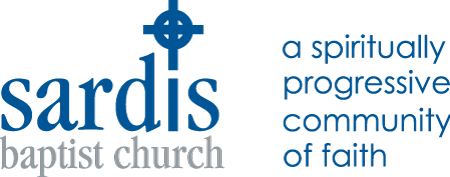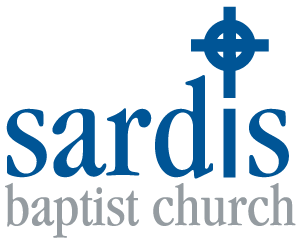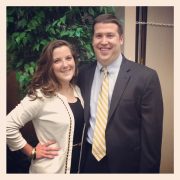Gospels

Gospels
Bob Stillerman
Eighteenth Sunday After Pentecost, 10/9/2022
Luke 17:11-19
A Word About the Word: Gospels
Over the next few weeks, we are going to engage our canonical gospels: Matthew, Mark, Luke/Acts, and John. This week, I want to provide you with a brief overview of Gospels that I hope will inform our discussions in the coming weeks.
Gospel means truth.
In the century following Jesus’s death, many communities of believers were eager to express and articulate the meaning of his life and ministry. As the First Century neared its end, there were fewer and fewer first and second-hand witnesses to the events of Jesus’ ministry. There was an urgency to record and preserve truth. As a result, various communities began to offer their own versions of the Jesus story.
Our canon gives us four Gospels, but there are dozens of other apocryphal versions, and more and more are revealed each year through archeological discoveries. Our “canon,” that is our standard list of sacred books, was formalized sometime in the Fourth Century CE by various councils of bishops. None of us were there, but we can infer the final selections coincided with the dominant theological strands of those in power. In this community of faith, we recognize the importance of our official canon, but we also affirm the insight gleaned from our unofficial canon – boundless expressions of truths, in a myriad of forms, shared and received throughout two millennia.
I am going to cover specifics of each Gospel in the weeks they are highlighted. This morning, I want to offer three practices for engaging any Gospel, be they canonical or non-canonical: 1) Know the timeline 2) Distinguish the literary from the literal and 3) Invite yourself and others into the story.
Know the timeline. It’s important to understand the historical context of the author(s). When is the storyteller telling the story? What the author(s) is experiencing in the present will inform their interpretation of the past.
We read about the Pentateuch this summer. These books tell the story of the primordial history, as well as events that happen sometime in the Fourteenth Century BCE. They are finalized in the Sixth and Fifth Centuries BCE. Therefore, the Babylonian exile, and the return from exile, play a vital role in the re-telling of Israel’s history. A story about an Egyptian pharaoh can also be a commentary on a Babylonian king. An origin story of a tribe or order offers standing for that people group in the present. For example, descendants of Aaron become known as the most authentic priestly order.
The same is true for our Gospels. These stories are recorded 40-60 years after the death of Jesus by Jesus-followers who are marginalized from mainstream Judaism. Their main opponents, groups like the Pharisees and Sadducees, take on less favorable characteristics in the narratives. As modern readers, we must be aware of these biases, and distinguish facts from feelings.
I’m including a handout that offers a visualization of these biblical and modern timelines.
Distinguish the literary from the literal. At their core, Gospels tell imaginative stories. They draw us in.
The stories seek to reveal timeless truths rather than report incontrovertible facts. The authors want us to know that something of deep meaning and relevance has happened, and they want us to remember.
My Uncle, Schaefer Kendrick, was a native son of Greenville, SC, and he wrote a weekly column for the Greenville News. He remembered fondly the night that Frank Selvy became the first college player to score 100 points in a basketball game. “When this game was played,” he said, “Our town had a population of well over 50,000 people, and Memorial Auditorium had a seating capacity of around 5,000. And yet somehow, every resident of Greenville claims to have seen this event happen in person!”
To say the whole town showed up is not a literal truth. It does not pass journalistic muster. But it sure does make for a memorable story. And more importantly, it relays, concisely, that this event had a profound effect on the community. The Gospels do not recount statistics, or attendance figures, or decimal-point calculations. They tell the story of how God’s presence, manifested in the life of Jesus, made people feel, and how those feelings of love, belonging, inclusion, affirmation, and community create healing in a broken world.
You are Invited! Like all good stories, the Gospels invite us to see ourselves and others in the narrative. If we are serious about that invitation, we will be both affirmed and challenged. There will be times when we resonate with the heroes and heroines – Yes!!! We could be cast for those roles!!! At other times, if we are honest, we might notice that we, too, have been clumsy disciples, or callous landowners, or oblivious onlookers. Regardless of the character we play, there is always an invitation into discernment, and grace, and community. There is redemption. There is reconciliation. There are glimpses of God’s world. Newspapers and history books seek to tell us what happened. Gospels remind us of what’s still happening, and how we can become part of the story.
In the weeks ahead, don’t go in search of THE truth. Instead, simply seek to discover truths: about God, about our world, and about each other.
Homily: Jerusalem and Samaria
Luke 17:11-19
I mentioned awareness of context, literary tones, and invitation as being necessary ingredients for engaging our Gospels. Let’s see what they tell us about today’s text from Luke.
Israel was once a united monarchy under David and Solomon. It eventually splits into a divided monarchy of Israel and its capital Samaria in the North and Judah and its capital Jerusalem in the South. Israel is eventually conquered by Assyria, and 150 years later, Judah by Babylonia. The 150 years of extra existence give Judah the leverage to assert its perceived ethical and moral superiority over Samaria.
Here’s the short version Judeans told: Samaritans worshiped God at regional shrines; Judeans worshiped God in Jerusalem. The idolatry (geography!) of the Samaritans ensured their untimely demise; the faithfulness of the Judeans sustained their existence.
When the exile happens, Babylonians deport the best and brightest Judeans. 50 years later, the exiled Judeans return and begin to rebuild.
Fast forward 500 years. Samaritans in Jesus’ day represent the descendants of the Northern Kingdom, as well as those non-exiled Judeans. To be a real Judean, or a faithful and credentialed disciple of Judaism, one needed to be a descendant of the South, and of the exiled. Samaritans are marginalized, villainized, and dehumanized by First Century Judeans.
In introducing a Samaritan leper, Luke’s author introduces the ultimate outsider. His health, his religion, and his ethnicity are made into barriers to community.
Because leprosy was so contagious, afflicted persons had to separate from community. Re-entry required a priestly certification of healing. The process, a priestly confirmation, and the place, the Jerusalem Temple, are central to re-entry.
So…that’s your context.
Here comes the literary magic! Jesus enters a town somewhere in between Jerusalem and Samaria. (Sorry, Mr. Newspaper Editor, we don’t know the exact time and place!). Jesus heals ten lepers. (Again, short on editorial details!). I don’t think Luke’s author is telling the story of a visit to Walgreen’s to get a vaccine. I think Luke’s author, in this simple phrasing of mercy-showing, is pointing out that Jesus offered connection and community to a group of outsiders. By simply acknowledging their presence, Jesus breaks down the barrier of ostracization. By engaging them in a pastoral and restorative way, Jesus removes the jurisdictional requirements for God’s presence and healing. This scene doesn’t happen in either the Judean or Samaritan Temples, it happens in undefined space.
But wait, it gets better! One of the persons healed, only one, returns to offer gratitude. He also happens to be a Samaritan. Jesus reminds him that it’s his faith that’s made him well. And again, the jurisdictional requirements are eliminated. The Samaritan doesn’t need documentation to be healed, nor does he need certification to express his gratitude. God heals him, and he recognizes that healing in the present. The others trod onto Jerusalem – their wholeness too bound up in systems.
And then there’s the invitation. We are two millennia removed from the tension that existed between Judeans and Samaritans, but that doesn’t mean we don’t Samaritanize our neighbors. We often expect those who are most different than us to exhibit less faith, less empathy, less openness, less humanity, less possibility for transformation. Luke’s Gospel disrupts our expectations. Samaritans, those whom the world defines as too different than our own, show themselves to be neighbors, and faithful disciples, and provocative conversation partners, and children of God. Somewhere, in a forgotten village, Jesus creates a bridge between Jerusalem and Samaria. And he invites each one of us to walk across it.
Gospel is truth – truth that God transcends the requirements of rigid systems; truth that God loves all humanity; truth that communities of praise and thanksgiving can steel us in troubled times; truth that God is present; truth that we are enough; truth that God’s kin-dom is breaking into this world.
Good friends, may God give us the curiosity to discover such truth. And may God give us the courage to walk across that bridge between Jerusalem and Samaria.
Amen
Recent Sermons
Salvation Realized
March 30, 2025
Repentance Revisited
March 23, 2025
Forms of Salvation
March 16, 2025


